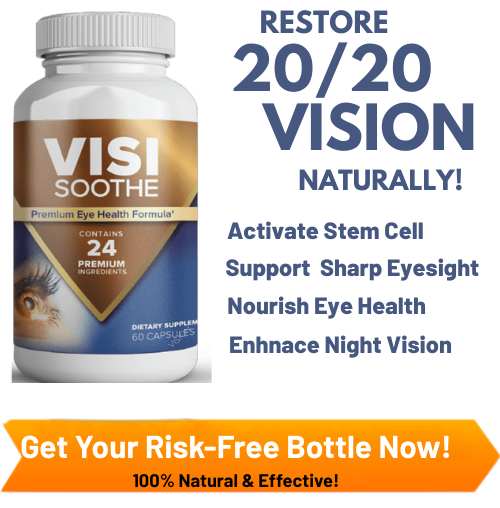Don't Judge a Supplement by Its Bottle
Walking down the health aisle, you’re faced with a wall of supplement bottles. Each one has a bright label and bold promises: "Maximum Strength Vision Support," "Clinically Studied Formula," "Protects Aging Eyes." They all look promising, but how do you know what’s truly effective versus what’s just clever marketing?
The reality is that supplement labels can be confusing. They are often filled with technical jargon and designed to sell, not necessarily to inform. It's incredibly easy to waste money on a product that contains the wrong ingredients, ineffective doses, or is packed with unnecessary fillers.
This guide will change that. We will demystify the "Supplement Facts" panel, turning you into a confident, savvy consumer. By the end of this article, you will know exactly how to read a label, what to look for, and what red flags to avoid, ensuring you choose a product that genuinely supports your eye health.
The Anatomy of a Supplement Facts Panel: A Section-by-Section Breakdown

Think of the "Supplement Facts" panel as the nutrition label for your vitamins. It’s where the real information lives, far away from the flashy claims on the front of the bottle. Let's break it down section by section.
1. Serving Size & Servings Per Container
This is the first thing you should check. The Serving Size tells you how many capsules, tablets, or softgels you need to take to get the nutrient amounts listed on the label. A common mistake is assuming the serving size is "1 Capsule" when it might be two or even three. If the serving size is "2 Capsules" and you only take one, you're only getting half the benefits.
Next, look at Servings Per Container. This tells you how many doses are in the bottle. Use these two numbers to calculate how long a bottle will actually last and its true monthly cost. For example, a 60-capsule bottle with a "2 Capsule" serving size contains 30 servings, meaning it will last you one month, not two.
2. Amount Per Serving & The Ingredient List
This is the most critical part of the label. The Amount Per Serving column shows you the exact dosage of each individual nutrient in one serving. When a product claims to contain Lutein, this is where you verify you're getting the effective, research-backed amount.
3. % Daily Value (%DV)
The % Daily Value tells you how much a nutrient in a single serving contributes to a standard 2,000-calorie daily diet. While helpful for general vitamins like Vitamin D or Calcium, it can be confusing for specialized eye supplements.
You will notice that many key eye nutrients, like Lutein and Zeaxanthin, have an asterisk (*) in the %DV column. This simply means a "Daily Value has not been established" by the FDA. This does NOT mean the ingredient is unimportant; in fact, for eye health, these are often the most crucial ingredients.
Decoding the Jargon: What "Proprietary Blends" and Other Terms Really Mean
Companies sometimes use confusing terms to make a product sound more impressive than it is. Here’s how to see through the marketing.
The Big Red Flag: "Proprietary Blend"
If you see the words "Proprietary Blend," "Eye Health Complex," or any other branded mix, be very cautious. This term allows manufacturers to list a group of ingredients under a single total weight—for example, "Vision Support Blend... 500 mg."
The problem? You have no idea how much of each ingredient is in that blend. The 500 mg mix could be 499 mg of cheap filler and only 1 mg of the expensive, active ingredient like Lutein. It makes it impossible for you, the consumer, to know if you are getting an effective, scientifically-backed dose.
Rule of thumb: Always choose products that list the specific amount of each individual ingredient. Transparency is a key sign of a quality supplement.

The Savvy Senior's Checklist: What to Actively Look For
Now for the good stuff. Here is a simple checklist of positive signs that indicate a high-quality, effective eye supplement.
1. The AREDS2 Ingredients (The Non-Negotiables)
The landmark Age-Related Eye Disease Studies (AREDS/AREDS2) identified a specific combination of nutrients that are scientifically proven to help slow the progression of age-related macular degeneration (AMD). A great eye supplement should be built around this formula.
Look for these five core ingredients at or near these dosages:
- Lutein: 10 mg
- Zeaxanthin: 2 mg
- Vitamin C: 500 mg
- Vitamin E: 400 IU (look for the natural form: d-alpha-tocopherol, not the synthetic dl-alpha-tocopherol)
- Zinc: 25-80 mg (often as Zinc Oxide)
- Copper: 2 mg (this is essential to prevent copper deficiency when taking higher doses of Zinc)
2. Third-Party Certification Seals
These seals are your proof of quality. They mean an independent, non-profit lab has tested the supplement to verify that what's on the label is actually in the bottle, in the correct amounts, and free from harmful contaminants. Look for these logos on the packaging:
- USP (United States Pharmacopeia)
- NSF International
- ConsumerLab.com
A certification seal is one of the best indicators of a manufacturer's commitment to quality and transparency.
The Buyer's Beware List: What to Avoid
Just as important as knowing what to look for is knowing what to avoid. Here are the red flags to watch out for.
1. Unnecessary Fillers and Artificial Additives
Check the "Other Ingredients" list. While some binders and fillers are necessary to make a stable pill, this list should be short. Be wary of products containing artificial colors (like FD&C Red #40), artificial sweeteners (like aspartame), or titanium dioxide. These add no health value whatsoever.
2. Dangerous Mega-Doses
With vitamins, more is not always better. Excessively high doses of certain nutrients can be harmful. Be cautious of supplements with:
- More than 10,000 IU of Vitamin A: Can be toxic to the liver in high doses.
- High Zinc without Copper: Can lead to a copper deficiency, causing anemia and nerve issues.
3. Beta-Carotene (A Specific Warning for Smokers)
The original AREDS formula used beta-carotene. However, research found it increased the risk of lung cancer in smokers and former smokers. The updated AREDS2 formula—which is the current gold standard—replaced it with Lutein and Zeaxanthin. If you are a current or former smoker, ensure your supplement is beta-carotene-free.
Conclusion: Making the Smart Choice with Confidence
You are now equipped with the knowledge to look past the marketing hype and analyze an eye supplement label like an expert. By focusing on the fundamentals, you can make a choice that truly benefits your long-term vision health.
To recap, here is your simple plan:
- Check the "Supplement Facts": Verify the serving size and the dosages of each ingredient.
- Look for the AREDS2 formula: Ensure the core five ingredients are present in their clinically-backed amounts.
- Seek out Third-Party Seals: Use USP, NSF, or ConsumerLab certifications as your guide to quality.
- Avoid Red Flags: Steer clear of proprietary blends, artificial colors, and mega-doses.
Empowered with this information, you can invest your money wisely in a product designed for maximum effectiveness and safety.
Now that you know how to choose a supplement, see our top recommendations in the best eye vitamins for seniors guide
Disclaimer: The information presented in this blog post is intended for informational purposes only and should not be considered medical advice. While we strive to provide accurate and up-to-date information, it is not a substitute for professional medical guidance. Always consult with a qualified healthcare professional before making any decisions related to your health or treatment.
We strongly encourage you to seek the advice of a physician or other qualified healthcare provider with any questions you may have regarding a medical condition or treatment. Never disregard professional medical advice or delay seeking treatment because of something you have read in this blog post.
You Might Also Like

